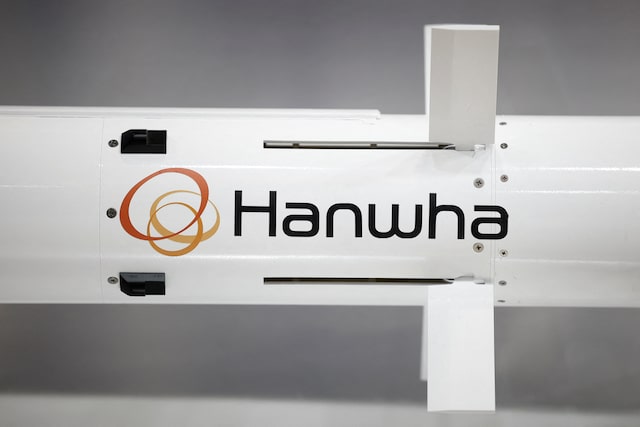A medium-range ballistic missile target is launched from the Pacific Missile Range Facility, before being successfully intercepted by Standard Missile-6 missiles fired from the guided-missile destroyer USS John Paul Jones, in Kauai, Hawaii, U.S. August 29, 2017 in this handout image. Latonja Martin/U.S. Navy/Handout via REUTERS

Flags of U.S. and China are seen in this illustration picture taken August 2, 2022. REUTERS
Summary
- US Air Force, in test, struck ship with QUICKSINK weapon
- Budget documents outline US plans for missile purchases
SINGAPORE, Sept 17 (Reuters) – The United States is amassing an arsenal of abundant and easily made anti-ship weapons as part of American efforts to deter China in the Indo-Pacific region and gear up U.S. forces there.
Russia’s invasion of Ukraine has pushed U.S. thinking toward a new philosophy – “affordable mass,” as one missile industry CEO put it, speaking on condition of anonymity, referring to having plenty of relatively cheap weapons at the ready.
“It’s a natural counter to what China has been doing,” said Euan Graham, a senior analyst with the Australian Strategic Policy Institute think tank, referring to the Chinese arsenal of ships and conventional ballistic missiles including those designed to attack vessels.
The Pentagon and China’s Ministry of Defence did not immediately respond to requests for comment.
The United States has ramped up testing of its QUICKSINK weapon, an inexpensive and potentially plentiful bomb equipped with a low-cost GPS guidance kit and a seeker that can track moving objects. The U.S. Air Force used a B-2 stealth bomber during a test last month in the Gulf of Mexico to strike a target ship with QUICKSINK.
China will still have a large advantage in sheer numbers of anti-ship missiles, according to experts, and can base them on its home territory. But increasing U.S. production of QUICKSINK would narrow that gap by putting China’s 370 or so warships at more risk during any future conflict than they have faced since before Beijing leaned into modernizing its military in the 1990s.
QUICKSINK, still in development, is made by Boeing with a seeker from BAE Systems QUICKSINK can be used with the hundreds of thousands of Joint-Direct Attack Munition tail kits – systems that can be dropped from U.S. or allied warplanes and cheaply turn “dumb” 2,000-pound (900-kg) bombs into guided weapons.
The U.S. military’s Indo-Pacific Command wants thousands of the QUICKSINK weapons – and has for years – according to an industry executive, who declined to reveal the precise figure because it is classified.
With enough “affordable mass” weapons aimed at them, Chinese ship defences would be overwhelmed, according to this executive, speaking on condition of anonymity.
In such a scenario, the U.S. military would use Long Range Anti-Ship Missiles (LRASM) or SM-6 missiles to damage a Chinese warship and its radars, then bombard the vessel with lower-cost weapons such as QUICKSINK.
A VARIETY OF WEAPONS
The United States has been amassing a variety of anti-ship weapons in Asia. In April, the U.S. Army deployed its new Typhon mobile missile batteries, which were developed cheaply from existing components and can fire SM-6 and Tomahawk missiles against sea targets, to the Philippines during an exercise.
Such weapons are relatively easy to produce – drawing on large stockpiles and designs that have been around for a decade or more – and could help the United States and its allies catch up quickly in an Indo-Pacific missile race in which China has a big lead.
Although the U.S. military has declined to say how many will be deployed in the Indo-Pacific region, more than 800 SM-6 missiles are due to be bought in the next five years, according to government documents outlining military purchases. Several thousand Tomahawks and hundreds of thousands of JDAMs are already in U.S. inventories, the documents showed.
“China’s game is to restrict the movement of U.S. Navy assets in the Western Pacific and First Island Chain,” Graham said, referring to the closest major archipelagos from the coast of East Asia. “This is a sort of like-minded response to make life difficult for the PLAN.”
PLAN is short for the People’s Liberation Army Navy, China’s maritime service branch.
Placing anti-ship weapons in locations such as the Philippines would put them within reach of much of the South China Sea. China claims 90% of the South China Sea as its sovereign territory but is opposed by five Southeast Asian states and Taiwan.
Collin Koh, a scholar at the S. Rajaratnam School of International Studies in Singapore, said, “In a way it is like levelling the playing field.”
Koh cited the example of Iran-aligned Houthi forces using low-tech anti-ship weapons against civilian traffic in the Red Sea, which forced the United States and others to deploy costly weapons to defend against them.
“If you look at the case of the Red Sea, clearly the cost equation (of anti-ship missiles) doesn’t fall on the side of the defender,” Koh said. “Even if you have a smaller arsenal of such offensive missile systems, you can still project some deterrence.”
Make sense of the latest ESG trends affecting companies and governments with the Reuters Sustainable Switch newsletter. Sign up here.
Reporting by Gerry Doyle in Singapore and Mike Stone in Washington; editing by Chris Sanders and Will Dunham




